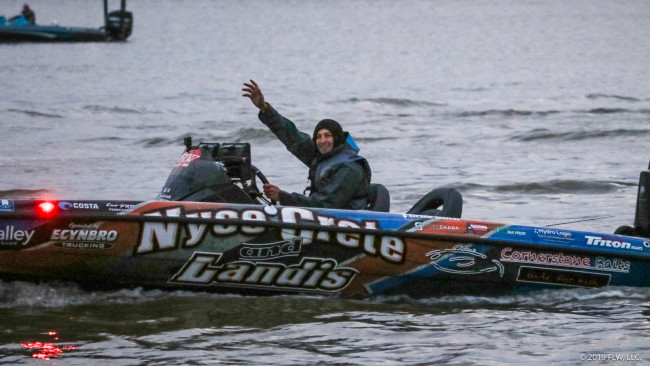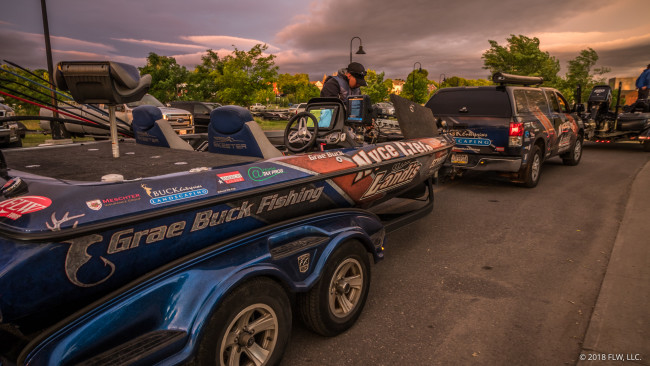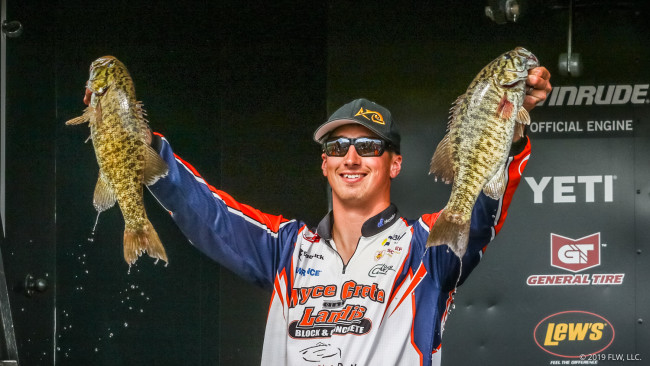How to Prepare for Big Water
Get your gear ready to reach giant smallmouth bass

(Editor's Note: The writer's opinions and observations expressed here are his own, and do not necessarily reflect or represent the views, policies or positions of FLW.)
As many of you know, fishing big water for giant smallmouths is my favorite type of fishing. Competing on the Great Lakes, 1000 Islands, St. Clair, Champlain and other big Northern fisheries is not for the faint of heart. Sometimes it gets rough, which is why it’s critical that you have the correct equipment and understand how to use it.
But here’s my disclaimer: Know your limits. This article is not in any way intended to help or encourage people to take unnecessary risks in dangerous situations. Sometimes the waves are too big, and in those cases, you stay home. I don’t want anybody to try and run a boat in situations outside their skill set.
That said, on big water, you’ll need to understand how to handle some waves. My first bit of advice is simple: Always – always – have your life jacket on and kill switch attached.
Here’s a rundown of what else you need to know.

The right equipment
Ensure that you have the right equipment before venturing out. I run a Triton 21 TRX with a 250-hp Mercury FourStroke. This boat provides me with power and length for fighting waves. A powerful and reliable engine, paired with a sufficient length boat, allows the driver to gap the waves and have the handling ability to ride up and down the troughs.
I also highly recommend having a T-H Marine HOT FOOTand ATLAS hydraulic jack plate. The HOT FOOT allows you to keep both hands on the steering wheel and control the throttle with your foot – just like in a car – to be in the best control of your boat at all times. The hydraulic jack plate is important because it allows you to move your motor up and down when fighting waves. You can put it down to get more bite or raise it to get on plane quickly if you stop.
During the FLW Tour season, I typically run a three-blade prop to get the most speed out of my boat, but when it comes to big water, I want to make sure the prop is pushing me at all times for maximum control of the boat. For that, I like a four-blade prop. Mine is the Comp Series Fury 4. There is no worse feeling than when you are climbing a swell and don’t have the “grip” to power you up over the top. With a four-blade prop, you get more bite and more control.
I also use a few accessories that I wouldn’t dare go without. The first is a T-H Marine Troll-Tamer Trolling Motor Stabilizer Lock. This nifty device keeps your trolling motor locked down to your deck to hold it tight and secure. I also mount my Lowrance electronics in a Bass Boat Technologies Dual Mount graph system at the console and bow of my boat. The mount is super strong and can withstand the impact of the Great Lakes waves.

Boat maintenance and checks
Thorough boat and equipment checks are critical before fishing rough water. If you’re unsure of what to do, your boat dealer can probably help you out.
The first things I always check are the bolts that mount the motor to the transom, as well as the jack plate bolts. Bolts can wiggle loose in rough water, which can lead to dangerous equipment failures. You don’t want any wiggle room. Tighten them down.
The next things I check are the screws under the rub rail. These have a way of backing out and eventually shearing off if not tightened (Believe me. I’ve had it happen!). This can be a tedious process, but is a must, and will save you time and ensure safety.
Next, check to be sure that all of your bilge pumps are working. A reliable bilge pump is critical to bail you out.
Also carry a spare set of dry clothes, extra water and food. This is good to have on any lake in the event you get stuck out on the water longer than anticipated.
Finally, be sure that all your safety equipment is in good working condition and ready to be used should it be needed. I’m talking flares, life jackets, a whistle, motion sickness pills, etc.

Tips for driving on big water
The safest way to navigate large waves is by running the troughs. This allows you to run at a faster speed while avoiding constant pounding. To stay in the troughs, you sometimes need to run in a zigzagging pattern. You won’t be taking the most direct path, but this method allows for the safest (and often driest) trip to your fishing spot.
The other option when riding large waves, if they are spaced far enough apart, is to take them at a 45-degree angle. The key is ensuring the nose of the boat stays up, so that you do not spear the waves.
Always watch two or three waves in front of you and try to read what’s coming so you can keep an eye out for rogue waves or unexpected large swells before they’re already on you.
When making a long run in rough conditions, I like to mark a waypoint on my Lowrance HDS-12 LIVE and hit the “Go To” navigation feature. This marks a red line on your map that provides a visual of a straight route to navigate. It’s helpful when you’re riding waves and there are few landmarks from which to orient yourself.
While rough conditions can be intimating at first, once you become comfortable and learn to read the waves, you’ll be able to handle them.
Of course, my favorite part of fishing rough waters isn’t the driving. It’s the fired-up smallmouths, which have resulted in some of my best fishing days.